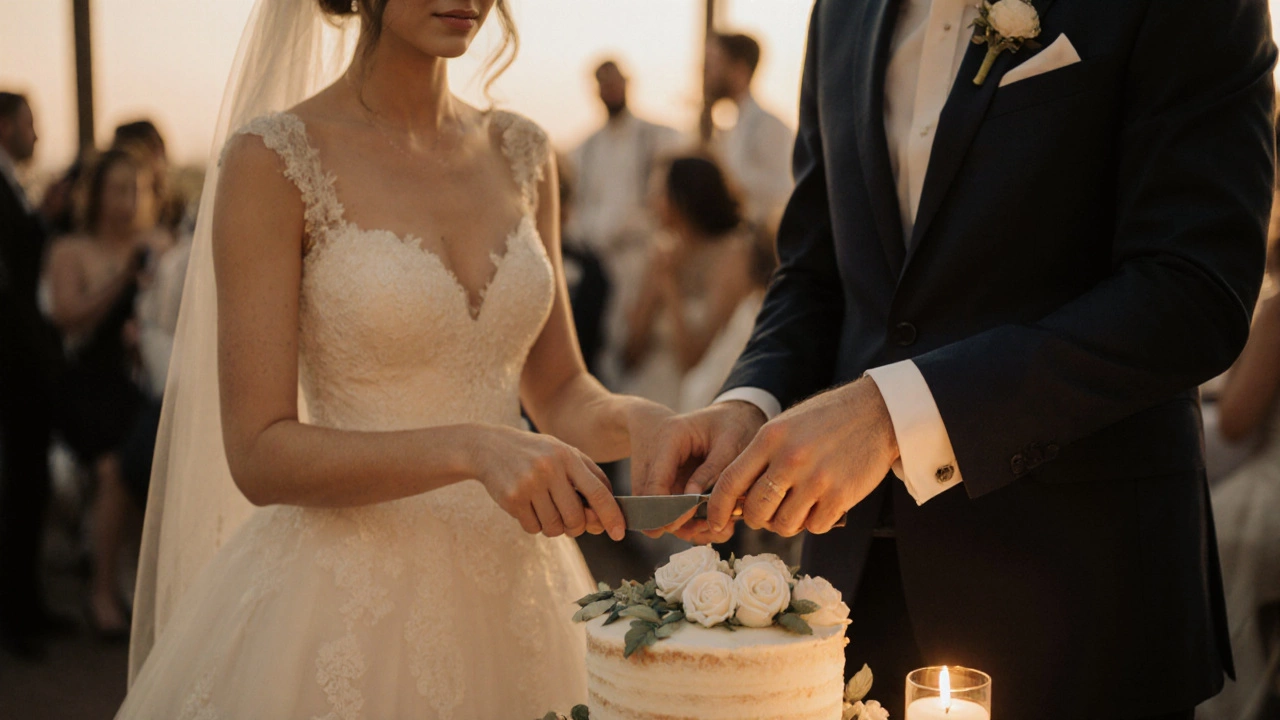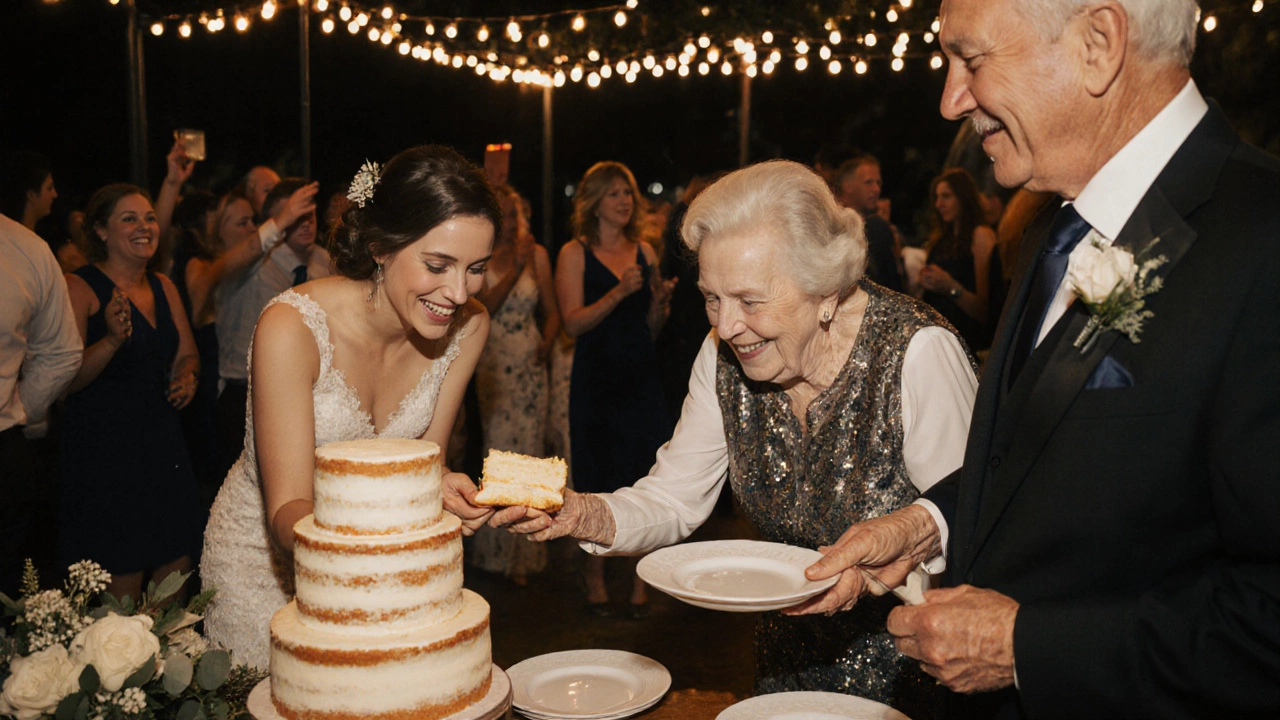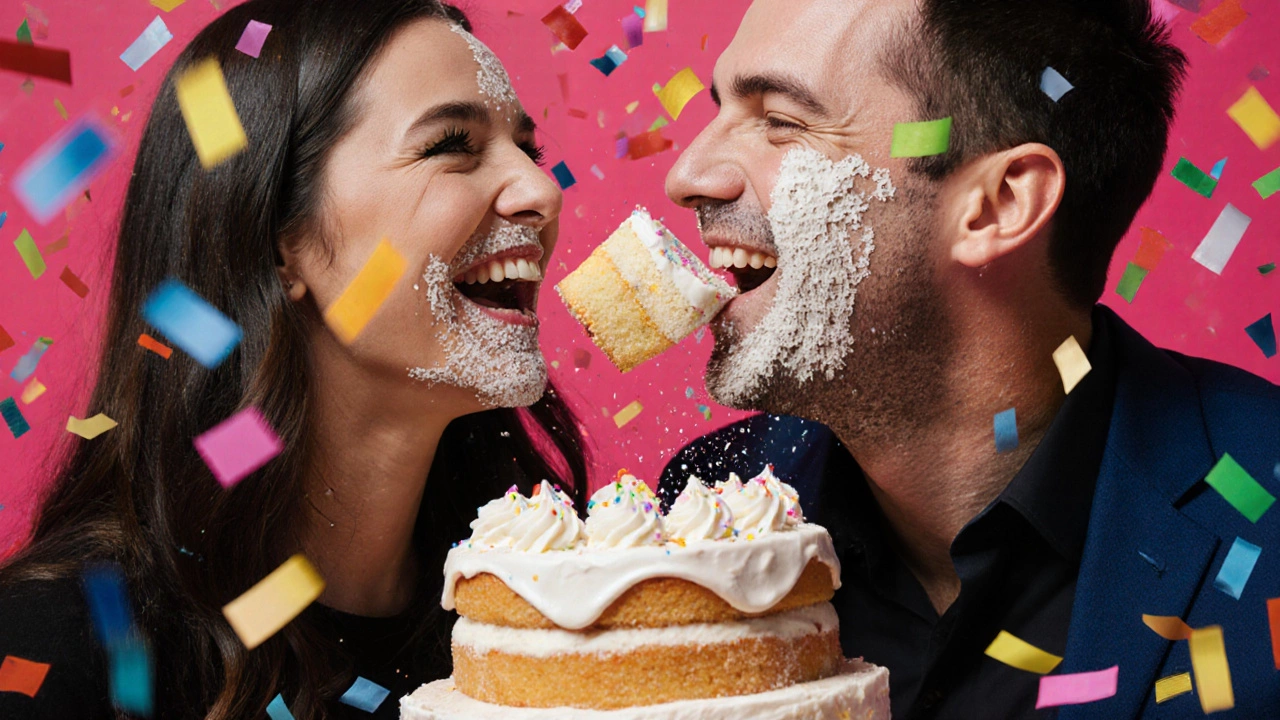Who Eats the Wedding Cake First? The Real Tradition Behind the Cut
 Nov, 16 2025
Nov, 16 2025
Wedding Cake Tradition Quiz
Ever watched a wedding cake being cut and wondered-why does the bride and groom do it together? Is it just for the photo? Or is there something deeper behind this moment? If you’re planning a wedding or hiring a wedding cake maker, you’ve probably heard the tradition tossed around like a sweet afterthought. But here’s the truth: how and when the cake is cut isn’t just about looks. It’s about symbolism, history, and sometimes, family rules.
The Classic Cut: Bride and Groom Together
The most common version you’ll see? The bride and groom stand side by side, hands over each other’s, holding the knife. They slice into the cake. Often, they feed each other a bite. It’s romantic, it’s staged, and it’s been done for decades. But why?
This tradition dates back to 19th-century England, where the bride alone cut the cake to symbolize the loss of her virginity and the start of married life. It was a private ritual, not meant for guests. Over time, the groom joined in-not to help, but to show support. By the 1950s, the dual-hand cut became a symbol of partnership. It wasn’t about who led, but who stood together.
Today, it’s still about unity. When a wedding cake maker designs a multi-tiered cake, they’re not just baking dessert. They’re building a centerpiece for a ritual. The cake isn’t just sugar and buttercream. It’s a representation of shared life, shared responsibility, shared sweetness.
Who Actually Eats the First Bite?
Here’s where things get messy. Most people assume the bride and groom eat the first bite together. And technically, yes-they do. But who takes that first bite? The answer isn’t written in stone. It’s cultural, personal, and sometimes, negotiated.
In many Western weddings, the groom feeds the bride first. It’s seen as a gesture of care, a playful nod to the idea that he’s taking care of her. But in other cultures, it’s the opposite. In parts of Italy and Latin America, the bride feeds the groom first, symbolizing her role as the nurturer. In some modern weddings, couples feed each other simultaneously-no order, no pressure.
And then there’s the reality: sometimes, the cake gets cut, the first slice is handed to the parents. Or the grandparents. Or the officiant. Why? Because in many families, the cake isn’t just for the couple-it’s a gift to those who helped make the day possible. In Australia, where I’ve seen dozens of weddings, it’s not uncommon for the first slice to go to the parents of the bride, especially if they paid for the cake. It’s a quiet thank-you.
What Do Wedding Cake Makers Think?
If you ask a wedding cake maker what they’ve seen, they’ll tell you this: the cake cut is the most unpredictable part of the day. One couple spent ten minutes arguing over who gets the top tier. Another couple let their dog lick the frosting. One bride cut the cake with a butter knife because her husband was afraid of the knife being too sharp.
Professional cake makers don’t just design for taste and texture-they design for function. A three-tier cake with fondant and delicate sugar flowers needs a sturdy base. A cake with fresh berries and cream filling? That’s a race against time. The cake maker knows that if the cut takes too long, the filling oozes. If the knife slips, the top tier cracks. They’ve seen it all.
That’s why many cake makers now offer a practice cut the day before. They’ll bring a small dummy cake or a spare tier so the couple can rehearse. It’s not about perfection-it’s about avoiding panic. One bride in Melbourne once told her cake maker, “I don’t want to be the one who drops the cake on my dress.” So they practiced. She nailed it.

Modern Twists: Breaking the Rules
Tradition is great-but not everyone wants it. More couples today are rewriting the script.
- The solo cut: One person cuts the cake alone-usually the one who’s more confident with a knife. No holding hands. No photos. Just a quick slice and a smile.
- The family feed: The first bite goes to the eldest guest. Or the child who helped decorate the cake. Or the best friend who drove 12 hours to be there.
- The cake toss: Instead of feeding each other, they toss a bite into each other’s mouths. It’s messy. It’s fun. It’s become a viral trend on TikTok.
- No cake cut at all: Some couples skip it. They serve cake as dessert during dinner. No ceremony. No fuss. Just cake.
And here’s the thing: none of these are wrong. Wedding cake makers don’t judge. They’ve seen couples cut their cake with a chainsaw (yes, really), with a spatula, or with a spoon after the cake was already served. What matters isn’t the tool-it’s the meaning.
Who Should Get the First Slice?
If you’re wondering who should eat the first slice after the cut, the answer is simple: whoever you want.
Here’s a quick guide based on common scenarios:
- Traditionalists: Bride and groom feed each other first, then parents.
- Modern couples: First slice goes to the person who helped you most-your mentor, your sibling, your pet’s therapist.
- Large families: First slice to the oldest living relative. It’s a sign of respect.
- Intimate weddings: First slice to the person who made you cry during your vows.
There’s no rulebook. No wedding cake maker will tell you you’re doing it wrong. They’ll just make sure the cake holds up.

Practical Tips for Your Wedding Cake Cut
If you’re planning your own cut, here’s what actually works:
- Choose a knife that’s sharp but not scary. A butter knife works fine if the cake is soft.
- Practice the motion once. Don’t overthink it. You’re not performing surgery.
- Have a server ready with plates. The cake should be served within 5 minutes of cutting.
- Don’t let the photographer tell you how to pose. If you’re awkward, that’s okay. Real moments beat staged ones.
- Consider a backup cake. If your main cake is too delicate, have a smaller, sturdier cake just for cutting.
And if you’re hiring a wedding cake maker, ask them: “What’s the most unusual cake cut you’ve seen?” Their answer will tell you more about their experience than any portfolio.
Why This Matters Beyond the Photo
The cake cut isn’t just a sweet moment. It’s one of the few times during a wedding where the couple takes a breath. After the speeches, the dancing, the vows-it’s quiet. Just two people, a knife, and a cake.
It’s a pause. A chance to say, without words: We’re doing this together.
So whether you cut it with your hand over theirs, or alone, or with your dog watching-do it in a way that feels true. Because the cake will be eaten. The photos will fade. But the memory of how you chose to begin this next slice of life? That stays.
Who eats the wedding cake first-the bride or the groom?
There’s no fixed rule. Traditionally, the groom feeds the bride first in Western weddings, but many couples now feed each other at the same time. In some cultures, the bride feeds the groom first. Ultimately, it’s up to the couple. What matters is that it feels meaningful to them, not what’s expected.
Can we skip the cake-cutting ceremony entirely?
Yes. Many couples today skip the formal cut and serve cake as part of dessert during dinner. There’s no obligation to follow tradition. If the cake is just for guests and you’d rather not perform it, your wedding cake maker will still make a beautiful cake-you’ll just enjoy it differently.
Should we use a real knife to cut the cake?
It depends on the cake. Delicate cakes with fresh fruit or cream fillings can collapse with a heavy knife. Many wedding cake makers recommend a thin, sharp serrated knife or even a plastic knife for safety and precision. Some couples use a decorative knife for the photo and switch to a regular one for the actual cut.
Who gets the top tier of the cake?
The top tier is traditionally saved to eat on the first anniversary. But many couples now freeze it, donate it, or share it with close family. Some even give it to their wedding cake maker as a thank-you. There’s no rule-it’s your cake, your choice.
Do wedding cake makers help with the cutting ceremony?
Many do. Some offer a practice cut the day before, provide a backup cake for the ceremony, or even send a staff member to assist with slicing and serving. It’s worth asking when you book. A good cake maker will anticipate logistics, not just flavor.